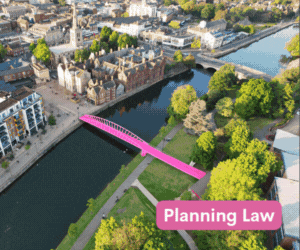High Court quashes farm planning approval over failure to consider ancient woodland and listed building
The High Court has quashed East Hertfordshire District Council's decision to grant prior approval for three large polytunnels after finding the authority failed to consider the impact on a nearby listed building and ancient woodland.
- Details
In Rickards, R (On the Application Of) v East Hertfordshire District Council [2025] EWHC 2278 (Admin), Mr Tim Smith, sitting as a deputy High Court judge, said he was "left in doubt" as to whether the planning officer handling the application "was even aware" that protective designations for the surrounding areas existed.
The case centred on polytunnels built on Bucksbury Farm to house tomatillo plants.
The farm owner relied on permitted development rights under the Town and Country Planning (General Permitted Development) (England) Order 2015, which required the council's prior approval of the siting, design and external appearance of the structures.
The claimant's property – a Grade II listed building known as 'the Gage' – sits on the western edge of the site.
Bayford Wood, which has been designated as an "ancient woodland" by Natural England, is also in the vicinity of the site.
The owner of the Gage challenged the council's approval on the following five grounds:
- Ground 1: unlawful conclusion that the agricultural unit in question was at least 5 hectares
- Ground 2: failure to require sufficient information to allow a lawful decision to be made on the application
- Ground 3: failure to take account of the potential impact of the development on the Bayford Wood ancient woodland
- Ground 4: failure to take account of the potential impact of the development on the setting of the Claimant's listed building
- Ground 5: failure to provide adequate reasons for the decision
The judge refused permission for ground five, while grounds one and two failed.
However, he concluded that grounds three and four succeeded.
Considering the two grounds together, he said: "Without the benefit of seeing the pleadings I would have had no clue at all that there is a listed building and an ancient woodland in the environs of the Works. There is no mention of either designation in the Report."
He also found that there was "no mention" of either designation in any of the application material and that there was no assertion in the witness evidence in the proceedings indicating the planning officer was aware that the Gage was a listed building or that Bayford Wood was an ancient woodland.
The absence of this in the witness evidence was "despite the fact that the Council's evidence was compiled after the Statement of Facts and Grounds had been seen and the complaints of the Claimant fully particularised", the judge added.
The judge ultimately concluded that the impact of the works on both the listed building and the ancient woodland were material considerations needing to be addressed as part of the prior approval decision.
He continued: "The evidence strongly suggests that this was not done. I am left in doubt from the evidence whether the Officer was even aware that these protective designations were in existence. That is a failing of the Council.
"Although the applicant did not highlight the existence of these designations either, a local planning authority can be taken to know about those which apply in its local area. For these reasons the prior approval cannot be allowed to stand."
Adam Carey
Senior Lawyer - Contracts & Commercial
Trust Solicitor (Employment & Contract Law)
Lawyer - Property
Contracts & Procurement Lawyer
Locums
Poll









































